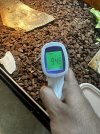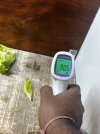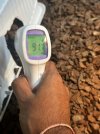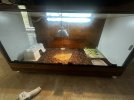You want it on a timer, but the timer needs to be set to run for 12-13 hours each day. Use a lower wattage bulb or a dimmer switch to get the temperature correct.Ok , I’ll put the basking bulb on thermostat instead of timers.
The timer can run through the thermostat and that can act as a failsafe in case things still get too hot. I set mine to 95-96F (35C)




